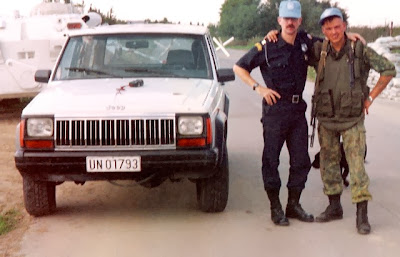By Elena Coates
What to do with several days and two sharp-eyed children who
like to dig in the dirt? If you live
anywhere near Arkansas, I recommend a visit to Crater of Diamonds State Park!
Crater of Diamonds is one of the few diamond mines in the
world and the only one open to the public. The park is set in lovely southwest
Arkansas and features an open field where lava flowed from the core of the earth
a bajillion and some-odd years ago. It's here, among all sorts of debris, one
can find raw diamonds RIGHT ON THE GROUND.
The park staff plows the field a few times a year, just to
stir things up, and visitors are welcome to hunt for gems by looking for them
on the ground, panning for them in a stream, or digging for them (but be
careful – diamonds may be hard to scratch but they're easy to break). And if
you're a complete novice at this activity, no worries – the staff will show you
a video, give you a live tutorial, and look at your rocks, just in case you
really do find something.
We traveled from Houston, Texas, where there are only two
seasons - summer and Groundhog Day. So,
on that fall day, as we drove north on U.S. Highway 59 it became increasingly
scenic: suddenly there were hills and the trees
actually changed colors. And when we hooked a right in Texarkana, it was
apparent that we really weren’t in Texas anymore.
We hauled our two boys to a newly-constructed Old West Town
called Diamonds Old West Cabins,
just 5 miles north of the park in Murfreesboro.
As the name implied, Murfreesboro is a very small town
(about 1,600 people). Still, everything we needed was found at either the
Rehkopf’s grocery store or the Dollar General next door. There’s even a good Mexican restaurant, Los
Agaves, with great service and tasty food.
But be aware: Pike County is dry,
so if you want alcohol you need to bring your own.
Back at the Diamonds Old West Cabins we stayed in the
Blacksmith shop, a small one-bedroom outfit with a loft for the kids. It came
with a full kitchen, an electric fireplace for warmth and atmosphere, and a
fire pit outside (wood provided). Also worthy of mention is the hot water
heater, which was first-rate; especially since the temperatures dipped into the
20s and conditions were extremely icy in late November. Owner Misty was wonderful, and the playground
on the property was a huge hit with the kids.
When we arrived and went into our cabin, our older son actually shouted,
“This is the coolest place I’ve ever been in my whole life!”
From there we spent a cold, wet, windy, but fun day
searching for diamonds in the park.
Conditions were extremely muddy, and I recommend knee-high rubber boots
if it has rained within a week of your visit.
Inside the visitor center lobby, there was a video showing the park’s
more significant finds which was encouraging, but we left with our hands full of only quartz
and jasper.
Not to be deterred – and eager to avoid the black ice on the
roads – we next hiked around lovely Lake
Greeson which is just a few miles north of Murfreesboro, and in the
afternoon visited Ka-Do-Ha Indian Village,
just 5 minutes down the road from our cabin.
Don’t be put off by their unsophisticated website – it’s worth a
trip! They have an interesting gift shop
with items ranging from cheap chotskies to Native American pottery, jewelry, and crafts. They also have a modest but fascinating
museum display in the adjoining room that includes pottery, weapons, and
several burial mound replicas. The
mounds are especially great; they show reproductions of the skeletal remains of native
people and the stuff they were buried with.
If
that’s too historical for your young’uns, don’t fret. The shop also sells
pre-stocked buckets of sand that ensure finds of polished stones, semi-precious
gems, and – for the right price – an actual cut diamond. Our kids had a blast sifting through their
buckets in spite of the freezing temperatures, and they love their treasures.
No doubt we will return to Arkansas in the summer, when
Houston’s hot, muggy flat-ness becomes overwhelming. But good weather is only
part of the reason we’ll go back. Everyone we encountered was friendly and
helpful and the facilities were fantastic. Searching for diamonds in Arkansas,
who knew we’d find so many?
















